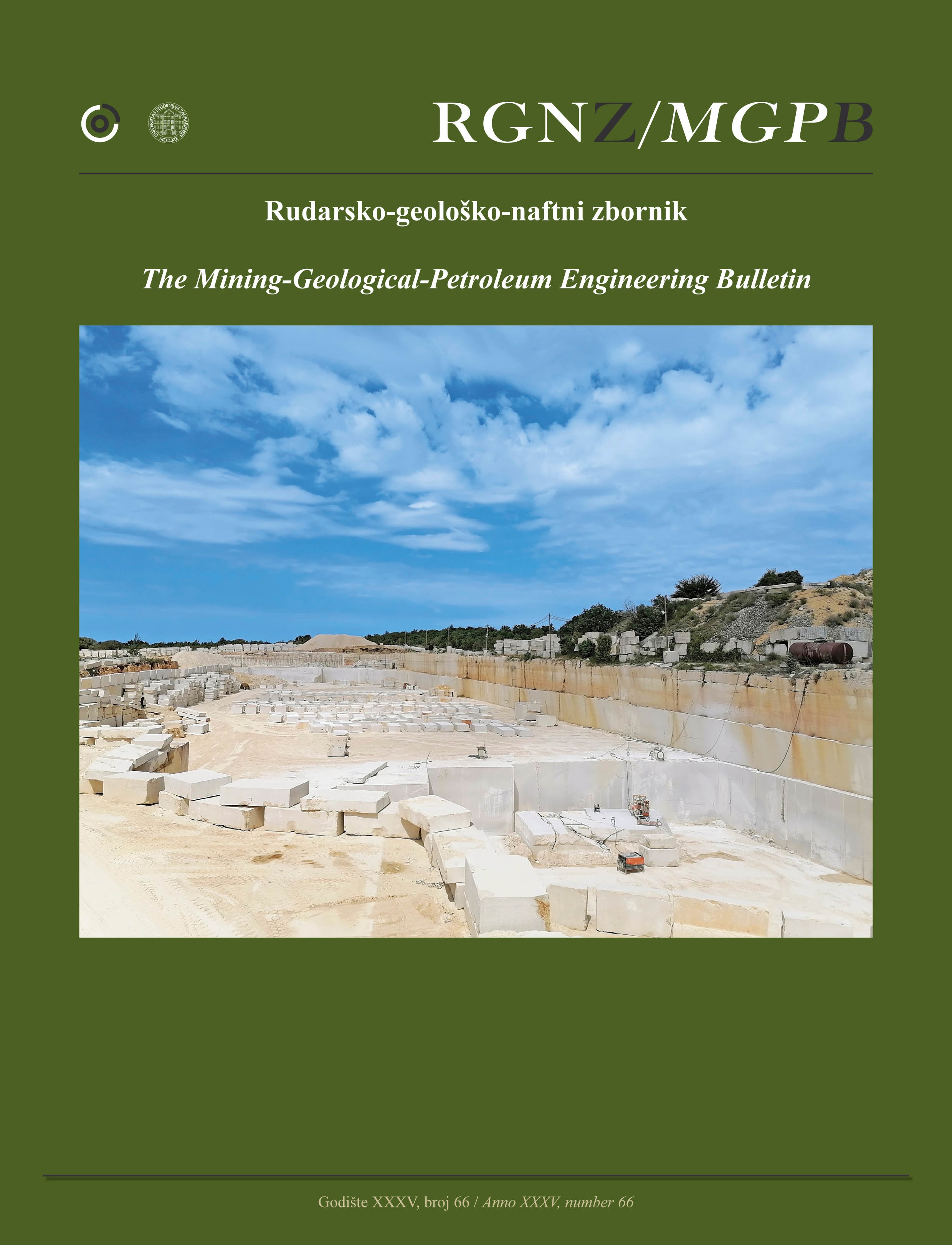Application of Neutron Computed Tomography in Enhanced Oil Recovery for Analysing Oil Distribution in Berea Sandstone using Bagasse Surfactant
DOI:
https://doi.org/10.17794/rgn.2023.5.8Keywords:
Neutron, Computed Tomography, Enhanced Oil Recovery, Bagasse Surfactant, Low SalinityAbstract
The Neutron Computed Tomography (NCT) technique was adopted to study oil content within sandstone. In recent times, oil industries have turned to the Enhanced Oil Recovery (EOR) technique that uses chemicals/surfactants to reduce interfacial tension to maximize oil production from mature oil fields. The Berea core played a crucial role in investigating surfactant effectiveness for liberating trapped oil. The presented research is based on laboratory experiments carried out at the National Research and Innovation Agency and at the Trisakti University, Indonesia. The research proceeded in three steps. The first step was observation on the Berea core that is saturated with a low salinity brine of 40,000 ppm and 60,000 ppm and assessment of the total porosity of the sandstone. The second step included injecting oil into the sample and examining the water distribution. The final step was to inject sugarcane bagasse surfactant with 2% surfactant concentration to extract oil from the sandstone, then it was subjected to NCT analysis. The observations show that the pores are evenly distributed in the middle, the oil content accumulates at the edge, almost no oil remains in the middle of the Berea core after water injection, and the remaining oil returns to the main flow after surfactant injection. The results show that oil movement in the Berea core with 40,000 ppm salinity is better than oil movement with 60,000 ppm. The salinity of the brine can affect the mobility of oil droplets in the Berea core, and surfactant injection processes have better performance at lower salinity and are susceptible to higher salinity.
Downloads
Published
How to Cite
Issue
Section
License
Copyright (c) 2023 Rini Setiati, Fahrurrozi Akbar, Gabriel PRASUCIPTO KARISMA, Achmad Ramadhani, Setiawan Setiawan, Renato Aditya, Muhammad Taufiq Fathaddin, Sulistioso Giat Sukaryo, Bharoto Bharoto, Iwan Sumirat

This work is licensed under a Creative Commons Attribution 4.0 International License.
Creative Commons-BY
Authors who publish with this journal agree to the following terms:
In agreeing this form, you certify that:
- You read the ethical codex of the RGN zbornik available at journal web.
- You submitted work is your original work, and has not previously been published and does not include any form of plagiarism.
- You own copyright in the submitted work, and are therefore permitted to assign the licence to publish to RGN zbornik.
- Your submitted work contains no violation of any existing copyright or other third party right or any material of an obscene, libellous or otherwise unlawful nature.
- You have obtained permission for and acknowledged the source of any illustrations, diagrams or other material included in the work of which you are not the copyright owner.
- You have taken due care to ensure the accuracy of the work, and that, to the best of your knowledge, there are no false statements made within it.
- All co-authors of this submitted work are aware of, and in agreement with, the terms of this licence and that the submitted manuscript has been approved by these authors.
Publication licence
You retain copyright in your submitted work, according to journal license policy (CC-BY). By signing this form you agree that RGN zbornik may publish it under the publication licence. In summary the licence allows the following:
Anyone is free:
- To copy, distribute, display, and perform the work.
- To make derivative works.
Under the following conditions:
- The original author must always be given credit.
- The work may not be used for commercial purposes.
- If the work is altered, transformed, or built upon, the resulting work may only be distributed under a licence identical to this one.
Exceptions to the licence
In addition to publishing the work printed under the above licence, RGN zbornik will also enable the work to be visible online.
The journal editorial can change the licence rules anytime but it cannot retroactively restrict author(s) rights.


